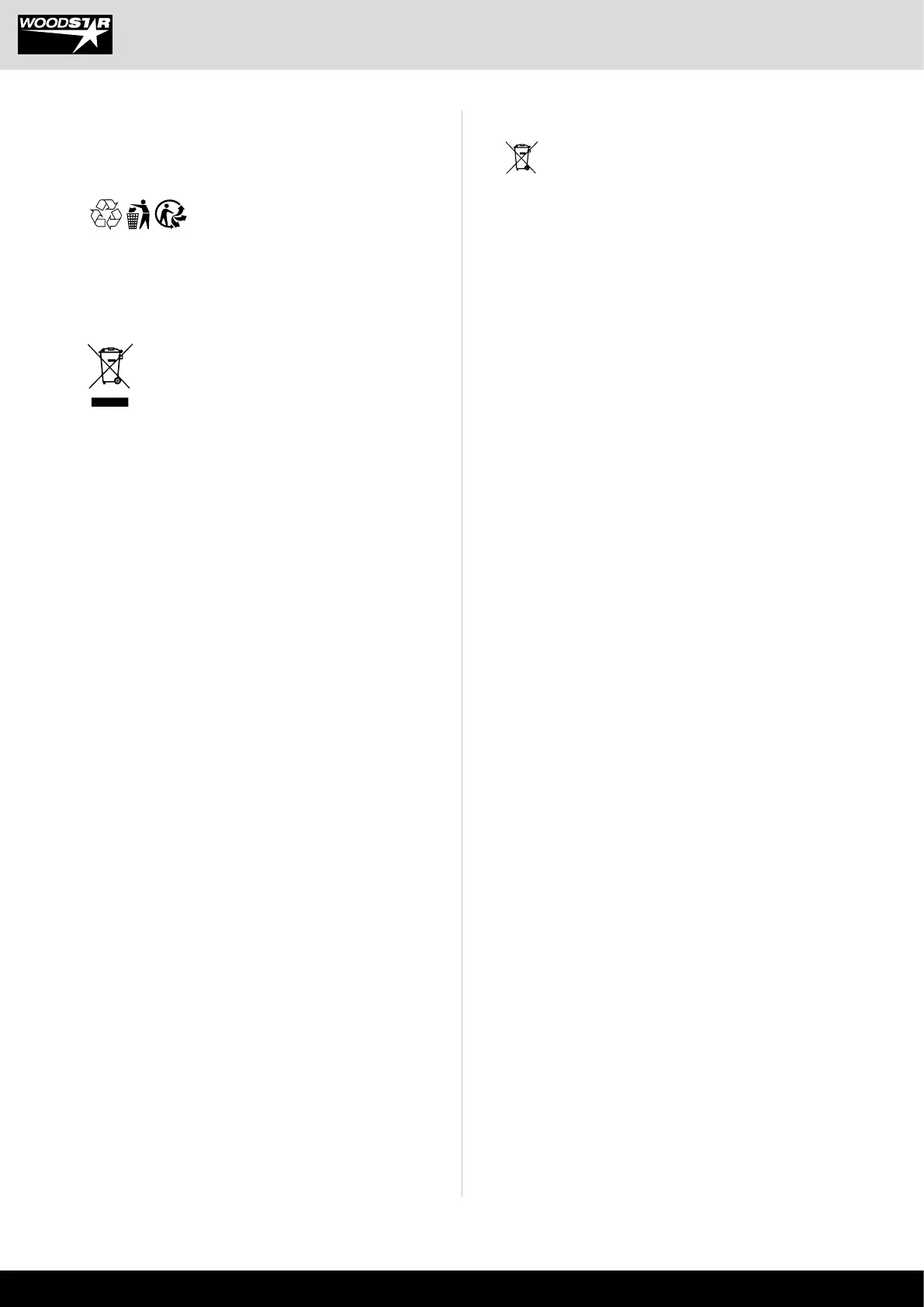Scheppach BLM560-225ES handleiding
Handleiding
Je bekijkt pagina 42 van 328

42
|
GB
Notes on lithium-ion batteries
Li-Ion
Remove the battery before disposing of the
device!
• Do not dispose of the battery in household waste, in
a re (risk of explosion) or in water. Damaged bat-
teries can harm the environment and your health if
toxic vapours or liquids escape.
• Defective or used batteries must be recycled in ac-
cordance with Directive 2006/66/EC.
• Hand in the device and the battery charger at a
recycling centre. The plastic and metal parts used
can be separated by type and thus recycled.
• Dispose of batteries when discharged.
We recommend covering the poles with an adhe-
sive strip to protect against a short circuit. Do not
open the battery.
• Dispose of batteries according to local regulations.
Return batteries to a used battery collection point
where they can be recycled in an environmental-
ly friendly manner. Ask your local waste disposal
company about this.
You can nd out how to dispose of the disused
device from your local authority or city adminis-
tration.
Fuels and oils
• Before disposing of the device, the fuel tank and
the motor oil tank must be emptied!
• Fuel and engine oil do not belong in household
waste or drains, but must be collected or disposed
of separately!
• Empty oil and fuel tanks must be disposed of in an
environmentally friendly manner.
14. Disposal and recycling
Notes for packaging
The packaging materials are recy-
clable. Please dispose of packaging
in an environmentally friendly man-
ner.
Notes on the electrical and electronic equipment
act (ElektroG)
Waste electrical and electronic equip-
ment does not belong in household waste,
but must be collected and disposed of
separately!
• Used batteries or rechargeable batteries that are
not installed permanently in the old device must be
removed non-destructively before disposal! Their
disposal is regulated by the battery act.
• Owners or users of electrical and electronic devic-
es are legally obliged to return them after use.
• The end user is responsible for deleting their per-
sonal data from the old device being disposed of!
• The symbol of the crossed-out dustbin means that
waste electrical and electronic equipment must not
be disposed of with household waste.
• Waste electrical and electronic equipment can be
handed in free of charge at the following places:
- Public disposal or collection points (e.g. munici-
pal works yards).
- Points of sale of electrical appliances (stationary
and online), provided that dealers are obliged to
take them back or oer to do so voluntarily.
- Up to three waste electrical devices per type of
device, with an edge length of no more than 25
centimetres, can be returned free of charge to
the manufacturer without prior purchase of a new
device from the manufacturer or taken to another
authorised collection point in your vicinity.
- Further supplementary take-back conditions of
the manufacturers and distributors can be ob-
tained from the respective customer service.
• If the manufacturer delivers a new electrical device
to a private household, the manufacturer can ar-
range for the free collection of the old electrical de-
vice upon request from the end user. Please con-
tact the manufacturer’s customer service for this.
• These statements only apply to devices installed and
sold in the countries of the European Union and which
are subject to the European Directive 2012/19/EU. In
countries outside the European Union, dierent reg-
ulations may apply to the disposal of waste electrical
and electronic equipment.
Bekijk gratis de handleiding van Scheppach BLM560-225ES, stel vragen en lees de antwoorden op veelvoorkomende problemen, of gebruik onze assistent om sneller informatie in de handleiding te vinden of uitleg te krijgen over specifieke functies.
Productinformatie
| Merk | Scheppach |
| Model | BLM560-225ES |
| Categorie | Niet gecategoriseerd |
| Taal | Nederlands |
| Grootte | 48278 MB |







